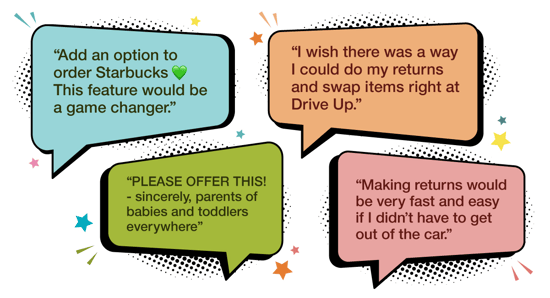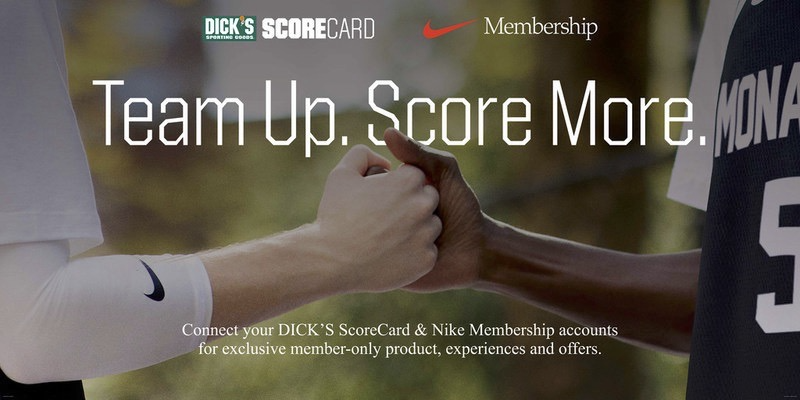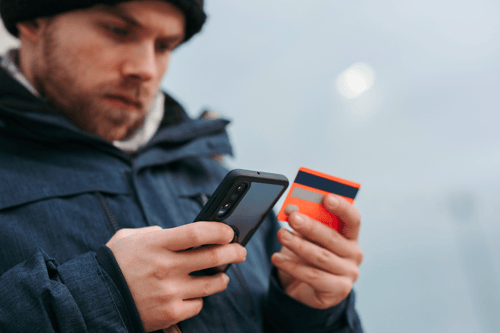Maria Pallante
CMO Priorities for Modern Retail Growth

To deliver a best-in-class omnichannel retail experience, brands must focus on customer-centricity and deliver on new expectations from people on both sides of the counter.
While retailers have spent two roller-coaster years focused on urgent priorities, customer-centricity remains at the top of the agenda with a focus on ease, convenience, and seamless experiences. And the data tells us there is work to be done.Of course, the pandemic put a big dent in retailers’ CX plans. While they accelerated their digital transformations, retailers’ in-store experience suffered. Arrows and social distancing and sanitizing are the antithesis of a positive customer experience. But now, as creating human connections is more important than ever to lead and ensure growth—there are no more excuses. Retailers that want to win have to get away from the slogans and look at customer-centricity as a way of life in the organization.
Here are seven priorities that retailers need to make space for. While not surprising, I'm resurfacing some, given what we're seeing in the sector and what the data is showing:
1. Create a seamless customer experience across all channels...really.
The need for a seamless customer experience isn’t new, but it continues to be elusive for retailers. While “seamless experience” has been every retailer’s mantra for years, studies (and all of our own personal experiences, I’m sure) show they still have a ways to go. And in some cases, they’re going backwards. For example, a report by NewStore found that 48% of brands equipped associates with mobile devices in 2021, down from 68% in 2020; 19% of brands offer mobile checkout, down from 33% in 2020; and 74% of brands offer contactless payment options, down from 83% in 2021.
A great example of delivering a better experience is Target's recently announced enhancement to its Drive Up contactless curbside service, which offers the option to add a Starbucks order and make product returns through the Target app with no pickup time window or membership fee required. Talk about ease and convenience—they are clearly listening to their customers!

So what’s getting in the way? Silos often prevent companies from doing what’s needed to deliver that experience, and there are more channels than ever to consider. At the same time, the bar on customer expectations has risen dramatically and their tolerance for a bad experience (even if it’s as simple as not accepting gift cards online) is extremely low.
Next steps: How a company organizes internally should not impact or slow down the process, so, get over the silos. Think about the organization’s physical and online presence as one, rather than as two separate entities. Make sure you’re considering experiences in all channels, for example: make offers available and usable across POS, e-commerce, and app; offer curbside pickup and “buy online, pick up in-store” (with a dedicated pickup area); and enable frontline associates to deliver on these experiences. (And yes, accept gift cards online and give the option of gift receipts to your online shoppers!)
2. Bring your brand purpose to life and communicate your values and beliefs.
Consumers want to buy products and services from brands whose purpose and values align with their own. According to Accenture, 62% of consumers want companies to take a stand on the social, cultural, environmental, and political issues they care about the most. Employees also want to work for companies that deliver on their purpose, and they expect authenticity. According to Inc., millennials will make up 74% of the workforce by 2025, and they’re looking for socially responsible employers. If you aren’t clear on your brand purpose, now is the time to define your “why” and put your purpose into action.
Next steps: Retailers can bring their purpose to life for consumers and employees through their people and culture, and through all their channels, including digital, in-store, social media, and more. Their purpose story can be told through how they present their products, whether through informative window displays, detail-rich labels, or online copy that makes the origin story and sustainability credentials crystal-clear. Brands that can demonstrate transparency within the store experience will be rewarded with greater affinity and engagement.
3. Know your customers and protect their data.
As third-party cookie data comes to an end, marketing leaders must accept a future of consent-based advertising. Loyalty programs help retailers with this challenge. At Bond, we often refer to loyalty as a “safe harbor”: a member’s express consent alleviates many privacy concerns. Still, the increased demand for personalized experiences comes with a heightened focus on consumer privacy.
Next steps: Retailers will need to find new ways to understand and engage their digital customers while assuring them their data isn’t misused. This means you should make consumer consent an even higher priority and leverage your customer and loyalty program to get consent. Ask only for the data you need, explain the purpose for using it, and then use it to deliver relevant communications and experiences.
4. Foster employee engagement to deliver customer-centric experiences.
Customer-centricity involves people on both sides of the counter. Your brand purpose matters to your employees as well as to your customers, and you can’t create great customer experiences if your employees are not engaged. This is a huge challenge for retailers, especially given the sector’s systemic labor shortages and COVID-19-related absenteeism. Retailers need to create a compelling, brand-aligned employee value proposition that acts as an anchor for the entire employee experience.
Next steps: Consider how you can provide employees with stability during these times and foster employee trust. Don’t expect loyalty to the company without demonstrating loyalty to your employees. A great example is Fabletics, which avoided pandemic layoffs by shifting frontline staff to roles as “omni-associates.” Other steps you can take: identify reasons for turnover and identify action plans against these; provide new, relevant benefits such as flexible schedules; provide in-store management teams with a toolkit to drive employee engagement through training and recognition programs; and target employee segments, and work to develop employee persona-based solutions to retain top talent. Most importantly, give your employees a voice: involve them in the design process of your employee experience journey to create a sense of community and make them feel heard.
5. Develop partnerships to help fuel growth.
A continuing trend among brick-and-mortar retailers is letting partner brands take up some floor space in stores. Store-within-a-store concepts (like Target and Disney, and Macy’s and Toys R Us) allow both brands to increase revenue, grow their customer base, and gain a halo effect. The same benefits can be seen in loyalty partnerships. Recent examples include:
- The newly revamped Scene+ from Cineplex and Scotiabank, for example, lets members redeem points on purchases at a growing number of retailers, including Apple and Best Buy. Through Rakuten, members can earn points at retailers such as Indigo, Sephora, The Bay, and more.
- To drive engagement and deliver a best-in-class, omni-channel experience, Dick’s Sporting Goods and Nike partnered up to allow customers to connect their DICK'S Scorecard and NIKE Membership loyalty accounts to gain access to exclusive products, offers, and experiences and, down the road, Nike customers might be able drop off returns or pick up online orders at Dick’s stores.
 Companies need to create a loyalty-embedded customer partnership where the program and people both benefit. A perfect example is Sephora’s relaunch into Kohl’s, bringing premium beauty and integrated loyalty experiences to both customer bases.
Companies need to create a loyalty-embedded customer partnership where the program and people both benefit. A perfect example is Sephora’s relaunch into Kohl’s, bringing premium beauty and integrated loyalty experiences to both customer bases.
Next steps: Consider how to extend benefits to customers with synergistic partnerships. The right partners can support your acquisition and engagement objectives. For loyalty program-focused partnerships, first gauge partnership interest among your members and carefully consider your loyalty objectives. Partnerships can provide new opportunities for brands to interact with consumers. However, if a partnership doesn’t appeal to members, it can negatively impact their satisfaction with the program.
6. Offer diverse payment methods, including installment payments.
In November, the consumer price index rose at an annual rate of 6.8%, according to the U.S. Bureau of Labor Statistics. To cope with rising costs—and to get the goods they want—more consumers will turn to the new layaway: buy now, pay later. BNLP installation payments solutions like Afterpay, Affirm, and Paybright offer more flexible agreements, interest-free offerings, and the choice to link debit over credit. According to The Loyalty Report, buy now, pay later is the new norm for generation Z. This young consumer cohort’s use of installment programs is 57% higher than the average consumer’s. However, this payment method doesn’t come without its difficulties. According to a recent Credit Karma & Qualtrics study, over 1/3 of BNPL users are falling behind on their payments.

Next steps: As rising costs could cause consumers to spend less on discretionary items, retailers need to make sure they’re evolving to support their customer needs. Get innovative with your payment solutions by considering options like buy now, pay later; contactless; and virtual gift cards.
WATCH our Bond Safari BNPL episode.
7. Ensure your loyalty program is relevant and valuable to members.
Loyalty programs continue to have positive impacts on customer advocacy, retention, and spend. The Loyalty Report found that 73% of members are more likely to recommend brands with good loyalty programs, 80% say programs make them more likely to continue doing business with brands, and 68% modify the amount they spend to maximize benefits. In the post-pandemic era, when consumers are craving escapes and a break from the monotony, brands will need to inject fun and relevant experiences into their member interactions.
Next steps: Optimize your loyalty mechanics to make the program more enjoyable for members, whether it’s through gamification or surprise-and-delight moments. Look to leading brick-and-mortar retailers that are creating differentiated, joyful experiences for customers—and deepening their connections to them at the same time. For example, in-store member experiences (including the Nike members mentioned above) at Dick’s Sporting Goods’ The House of Sport concept includes experiential features like a running track, rock-climbing wall, batting cage, and a putting green. Fun, unique experiences; special members-only access; and personalized benefits will win shoppers over in 2022.
Okay, but where do you actually start? Prioritization is critical. Mapping the actions you can take by level of impact on people and organizational effort (low to high) can help that prioritization. High impact / low effort items naturally rise to the top. Start there. Then, encourage customer and employee communication and engagement to build trust. Tell your customers and employees your plans and make them feel heard—and then deliver on your promise.